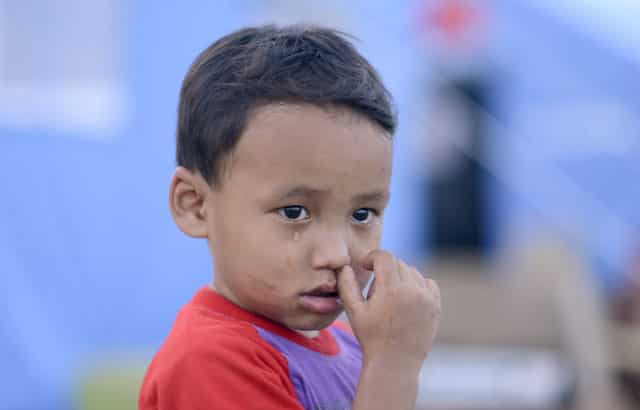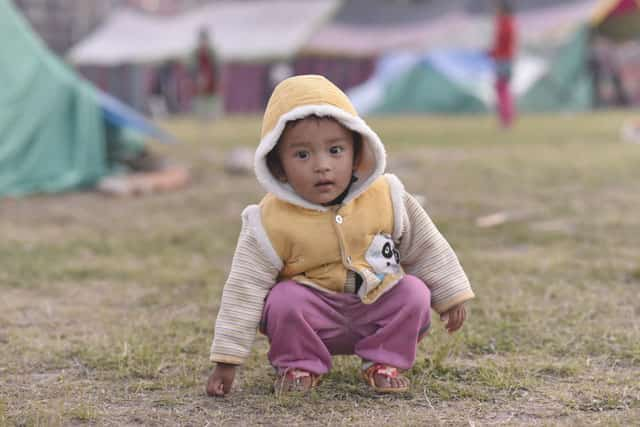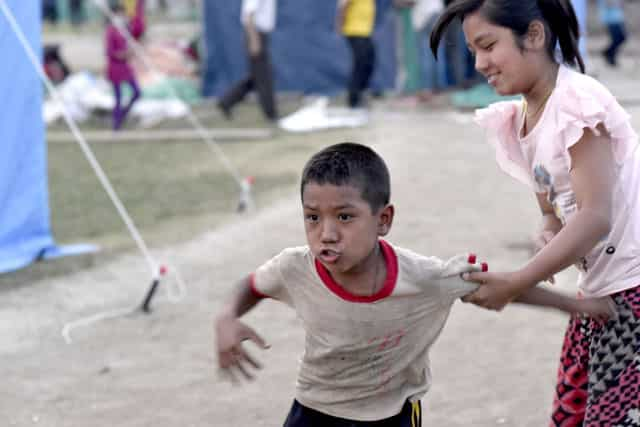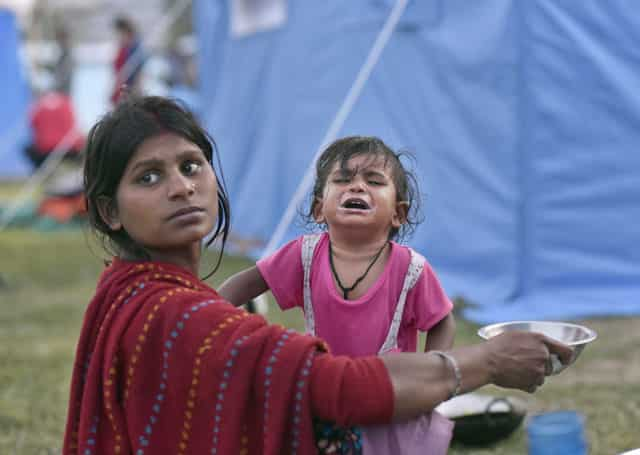Out in the cold, children are the hidden tragedy in Nepal’s mega earthquake
A week on from the earthquake, the health and wellbeing of hundreds of thousands of Nepali children hang in the balance, aid agencies say, seemingly hidden in plain sight of an otherwise massive international relief effort.
It is time for Niraj Lamichhane’s new session at school, a time for horsing around in the dorm, fun-in-the-sun and rousing sing-alongs with new classmates.

Instead, the second-grader is curled up under a tattered tarpaulin, preparing to rough out the cold night on a narrow sidewalk outside what used to be his home until last week’s earthquake. The boy is grouchy from a fever and a stomach bug.
“We are getting by on little food. We are not in the camp, so we don’t get any aid,” says Prakash, the boy’s father, who ran a mobile phone repair shop in the basement of his single-storey house.
“We have given medicine to him but the temperature has not subsided.”

Across town, as evening descends over the ruined Nepali capital, children huddle around small campfires at Tundikhel, the biggest sanctuary for quake refugees, trying to keep themselves warm. Some have no warm clothes; some are on near-empty tummy.
A week on from the earthquake, the health and wellbeing of hundreds of thousands of Nepali children hang in the balance, aid agencies say, seemingly hidden in plain sight of an otherwise massive international relief effort.
In the most remote mountainous regions, now only reachable by helicopter, children and babies are sleeping outdoors without any protection from the cold, night-time temperatures and rain, says global charity Save the Children.
In more accessible areas, children remain vulnerable to disease from the cold and unsanitary conditions they are living in.
At least 1.7 million children were affected by the earthquake, of whom some 260,000 have lost everything – their homes, their warm clothes and tragically sometimes their families.

At least 15,000 children with acute malnutrition require therapeutic feeding. Parents sleeping outside are reporting fevers, outbreaks of diarrhoea and the risk of pneumonia, aid workers say.
“Besides, the challenge of shelter, food and sanitation, the bigger goal is to get these children to bounce back, to get them back into their routine as soon as possible,” Rupa Joshi of UNICEF, Nepal, tells Hindustan Times.
Joshi says volunteers are still collecting disaggregated data on children, so it is yet unclear how many have been orphaned or separated from their parents – a highly vulnerable group often exposed to abuse and trafficking after a disaster.
About 5,000 schools are estimated to have been completely destroyed – which is expected to have a devastating long-term impact on the lives of children.
In Gorkha alone, the epicentre of the quake, Save the Children estimated that 90% of the district's 500 schools were destroyed or badly damaged, affecting 75,000 children.

At the Tundikhel campsite, there are more than 500 children. During the day, the kids splash in puddles. The bigger boys play a game of cricket. The two mobile toilets at the camp are not enough for the 3,000 residents, so children defecate in the open.
"We go over there," says Raju Thapa, pointing to the far end of the sprawling ground. "The crowd is this side, so that side is ok."
Often, children of disaster are adopted by couples from rich western countries. But at least one global charity is advising against this in Nepal, saying efforts to unite children with their parents should be a priority.
"Until all efforts have been exhausted to trace families, no action should be taken that may hinder family reintegration," the SOS Children’s Village said in a statement.
"Taking children away from their communities often compounds the trauma they are suffering and hinders their recovery."

Also, setting up orphanages is almost the default response to dealing with lost children or those with dead parents, instead of using resources to develop community-based care and family support, experts say. This can prevent unnecessary separation of kids from their extended family.
With the monsoon just a month away, children will be at heightened risk of diseases like cholera and diarrhoeal infections, as well as being more vulnerable to the threat of landslides and floods.
"We have a small window of time to put in place measures that will keep earthquake-affected children safe from infectious disease outbreaks," says Rownak Khan, UNICEF Deputy Representative in Nepal.
“That’s why it’s so crucial to get essential medicine, medical equipment, tents and water supplies out to these areas now.”
(Photos by HT's Gurinder Osan, at the refugee camp in Tundikhel grounds in Kathmandu)
Read:
Full coverage:





